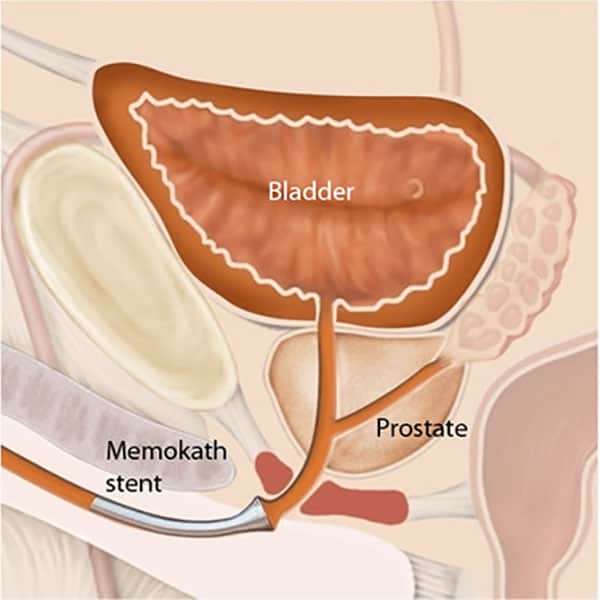Why is this done?
A urethral stent may be recommended occasionally to treat difficult or recurrent strictures of the urethra. The stent is placed after dilating or incising the stricture to reduce the chance of the stricture recurring. Once the stricture has stabilised after 3-6 months the stent can be removed.
Similar problems with scarring of the bladder neck can be helped by insertion of a stent at the time of bladder neck incision.
How is the operation performed?

Either a full general anaesthetic (where you will be asleep) or a spinal anaesthetic (where you are unable to feel anything from the waist down) will be used. All methods reduce the level of pain. Your anaesthetist will explain the pros and cons of each type of anaesthetic to you. You will usually be given injectable antibiotics before the procedure, after checking for any allergies.
The surgeon will insert a telescope into the penis through the water pipe (urethra). Any narrowing will then be dilated or cut using a special internal knife or a laser fibre. The stent is inserted down a telescope, and positioned with X-ray guidance. Once the stent is in place, the flange on the end helps to hold it in position.
The stents are generally left in place for 3-6 months. They are then removed or changed with a second, telescope operation.
After the procedure
You may be able to go home the same day, but sometimes an overnight stay is required. It is usual to have some mild discomfort for a few days, but this should settle quickly. You should return to normal activities gently, and shouldn’t lift anything heavy for a few weeks.
Potential side effects and complications
Most procedures are straightforward; however as with any surgical procedure there is a chance of side effects or complications.
Risks of the anaesthetic need to be discussed with the anaesthetist who will be looking after you during the operation, and who will visit you beforehand.
There are specific risks with this surgical procedure, and these will be discussed with you before your procedure. As a guide to complement that one-on-one discussion with your surgeon, these include:
Common
- A burning sensation and / or a small amount of blood in the urine for a short period afterwards.
Occasional
- Infection in the bladder requiring antibiotics.
- Temporary insertion of a catheter if you are unable to pass urine immediately after the cystoscopy. With a stent in place, it is sometimes necessary to insert a suprapubic catheter if you are unable to pass urine, as it can be difficult to pass a urethral catheter.
Rare
- Delayed bleeding requiring removal of clots or further surgery.
- Infection from the bladder causing septicaemia
- Inability to open the stricture, and the need for a temporary suprapubic catheter.
- Dislodgement of the stent, requiring removal.
- Encrustation of the stent, requiring removal.
- Rarely, some people find a stent painful, and it needs to be removed.
If you develop a fever, severe pain on passing urine, inability to pass urine or worsening bleeding, you should contact your Surgeon immediately. If out of hours, please go to your nearest emergency department.
Disclaimer
This information is intended as a general educational guide and may not apply to your situation. You must not rely on this information as an alternative to consultation with your urologist or other health professional.
Not all potential complications are listed, and you must talk to your urologist about the complications specific to your situation.
